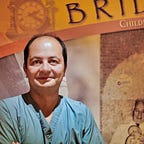Unveiling the Intricacies of Filming Yorgos Lanthimos’ “Poor Things”
Yorgos Lanthimos, renowned for his audacious storytelling, has once again pushed the boundaries of cinema with “Poor Things.” In this comprehensive breakdown, we delve into every aspect of the film’s creation, from its inception to its stunning visual execution.
Introduction: Setting the Stage
Yorgos Lanthimos’ foray into the realm of “Poor Things” marks a bold departure from his previous works, propelling his distinctive style to new heights. With a penchant for shocking audiences, Lanthimos embarks on a journey to unravel the complexities of Alasdair Gray’s satirical novel, infusing it with his trademark blend of wit and eccentricity.
Chapter 1: Cinematography
At the heart of “Poor Things” lies its mesmerizing cinematography, a testament to the collaboration between Lanthimos and director of photography, Robbie Ryan. Their meticulous attention to detail is evident in the extensive equipment tests conducted to achieve the film’s unique visual aesthetic. Shooting primarily on 35-millimeter film using ARRI ST cameras, supplemented by occasional use of the VistaVision camera for select sequences, the duo crafted a captivating tapestry of imagery that transcends conventional boundaries.
The selection of lenses, ranging from portrait to wide-angle, played a pivotal role in shaping the film’s visual narrative. Notably, the use of wide-angle lenses, including the abrasive 4mm Nikkor Optex Super Cine, facilitated fluid camera movement, complementing the surreal ambiance of the narrative. Lanthimos’ insistence on naturalistic lighting, coupled with Ryan’s ingenious placement of lights, further enhanced the immersive experience, blurring the line between reality and fiction.
Chapter 2: Production Design
The meticulous world-building of “Poor Things” unfolds against the backdrop of meticulously crafted sets, meticulously overseen by production designers Shona Heath and James Price. Their collaboration with Unreal Engine’s VR technology allowed for the visualization and refinement of sets in real-time, ensuring a seamless integration of physical and digital elements.
From Lisbon’s dusty streets to Paris’s cold allure, each city visited by the characters exudes a distinct visual palette, meticulously designed to evoke a sense of familiarity tinged with surrealism. The extensive soundproofing of sets, coupled with the seamless integration of CGI, further accentuated the film’s immersive quality, transporting audiences to an alternate universe where reality intertwines with fantasy.
Chapter 3: Costumes & Makeup
The costumes and makeup of “Poor Things” serve as a visual feast for the senses, blending forward-thinking modern aesthetics with Victorian sensibilities. Hair and makeup artist Nadia Stacey’s innovative approach to character design, informed by meticulous attention to detail, breathed life into each character, from Bella’s carefree demeanor to Godwin’s haunting visage.
Costume designer Holly Waddington’s bold reinterpretation of Victorian fashion, eschewing traditional corsets in favor of voluminous sleeves, underscores the film’s thematic exploration of freedom and empowerment. The painstaking process of prosthetic application, combined with Waddington’s intricate costume designs, contributed to the immersive experience, elevating “Poor Things” to a cinematic tour de force.
Conclusion: A Masterpiece in the Making
In unraveling the intricacies of “Poor Things,” one is left in awe of Yorgos Lanthimos’ visionary storytelling and the collaborative efforts of his talented team. From its audacious cinematography to its meticulous production design and stunning costumes and makeup, every aspect of the film coalesces to form a cinematic masterpiece that defies convention and leaves a lasting impression on audiences worldwide.
